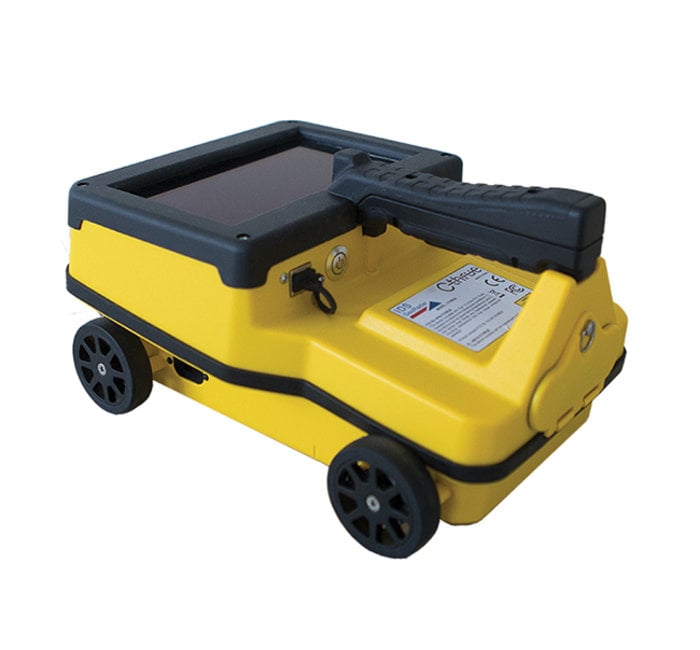Concrete Scanning: A Critical Action Towards Guaranteeing Architectural Honesty and Security
In the world of construction and infrastructure maintenance, the value of concrete scanning can not be overemphasized. This thorough procedure holds the essential to revealing potential risks concealed under the surface of seemingly solid frameworks. By using sophisticated innovation and methods, concrete scanning acts as a critical tool in ensuring that the integrity and safety of bridges and structures are maintained to the highest standards. However, past its surface-level effects, the function of concrete scanning expands far deeper than satisfies the eye.
Value of Concrete Scanning
Concrete scanning plays a crucial duty in making sure the structural integrity and security of structures and framework projects. By making use of sophisticated technologies such as ground-penetrating radar (GPR) and electro-magnetic induction, professionals can non-destructively inspect concrete structures to identify potential problems, voids, ingrained items, and reinforcement layout. This procedure allows early discovery of abnormalities that can jeopardize the stability of a structure, protecting against costly problems and making certain the safety of residents.
Concrete scanning is especially important during the preparation and building and construction stages of a task. Prior to exploration, reducing, or coring into concrete, scanning assists identify the exact locations of rebar, post-tension wires, and various other ingrained elements, lowering the risk of unintended hits that might cause structural weaknesses. In addition, concrete scanning help in quality assurance by confirming the thickness of concrete covers and spotting any type of inconsistencies that may impact the general resilience of the framework. Ultimately, purchasing concrete scanning services is not just a positive step to minimize dangers yet additionally a basic step towards maintaining the long-lasting security and stability of buildings and framework.
Innovation for Concrete Evaluation

Benefits of Early Detection
Timely detection of architectural issues can significantly alleviate dangers and make sure the durability of construction tasks. By determining potential troubles beforehand in the building and construction process, stakeholders can take aggressive steps to resolve problems prior to they rise into bigger and more pricey issues. One of the crucial advantages of early detection is the avoidance of architectural failings, which can present severe safety and security hazards and result in job hold-ups and financial losses.
Moreover, early detection permits for prompt repairs and maintenance, which can help extend the life-span of the structure. By addressing problems without delay, building teams can avoid costly fixings or perhaps the need for premature substitute of architectural components. This aggressive method not only conserves money and time yet also enhances the general safety and sturdiness of the building task.
Furthermore, early discovery can boost job planning and decision-making by supplying stakeholders with beneficial understandings right into the condition of the framework. Equipped with this information, task supervisors can make enlightened selections regarding building and construction products, approaches, and timelines, leading to more reliable and successful job outcomes.
Ensuring Architectural Security
Making sure the structural security of a construction job is paramount to its security and durability. Architectural stability refers to the capability of a structure or framework to maintain its form and feature under ecological problems and numerous lots. To accomplish this, extensive assessment and monitoring of the framework are important. Concrete scanning plays an essential function in making sure architectural stability by finding potential issues such as gaps, delamination, or support deterioration that might compromise the integrity of the framework over time.
By making use of innovative scanning technologies like ground-penetrating radar (GPR) and electromagnetic induction, building professionals can non-invasively inspect click concrete frameworks to identify locations of problem below the surface. This proactive method permits for the very early detection of weak points or problems, enabling timely repairs or reinforcement to stop structural failings.
Normal concrete scanning throughout different building and construction stages and throughout the life cycle imp source of a structure can assist preserve its security, mitigate threats, and ensure the safety and security of passengers. By focusing on structural security through concrete scanning, building tasks can enhance their resilience and durability, inevitably adding to greater security and longevity.

Preventing Important Failings
Carrying out regular assessments, such as concrete scanning, can reveal concealed flaws like voids, cracks, or deterioration that could jeopardize the integrity of a framework. By utilizing sophisticated scanning innovations like Ground Penetrating Radar (GPR) or Concrete X-ray, designers can non-destructively examine the problem of concrete and identify weak factors that need reinforcement or repair service.

Verdict
To conclude, concrete scanning plays an essential role in guaranteeing architectural stability and safety and security by using advanced technology for early detection of possible issues. This proactive approach aids avoid vital failures and makes sure the stability of frameworks. It is vital to focus on concrete inspection as a common method to protect the longevity and safety of structures and framework.
Concrete scanning plays an essential function in making sure the architectural stability and safety of structures and infrastructure projects. Additionally, concrete scanning aids in quality control by validating the density of concrete covers and finding any discrepancies look at here now that might impact the overall longevity of the structure. Concrete scanning plays an important function in making sure architectural stability by detecting prospective concerns such as gaps, delamination, or support corrosion that might jeopardize the honesty of the structure over time.

In conclusion, concrete scanning plays a crucial function in guaranteeing structural honesty and safety and security by making use of innovative innovation for very early discovery of possible issues.